How to grow Pistachios: Complete guide on Pistachio cultivation
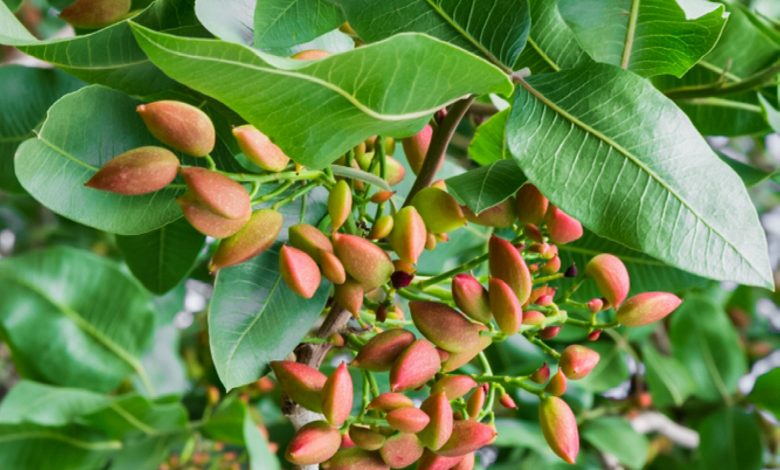
Hi Farmers. In today’s article we are going to see all the steps to grow the pistachio tree, also known as pistachio tree. Pistachios are a very common nut in many areas of the world, and they are easy to grow if the right weather conditions exist in your area.
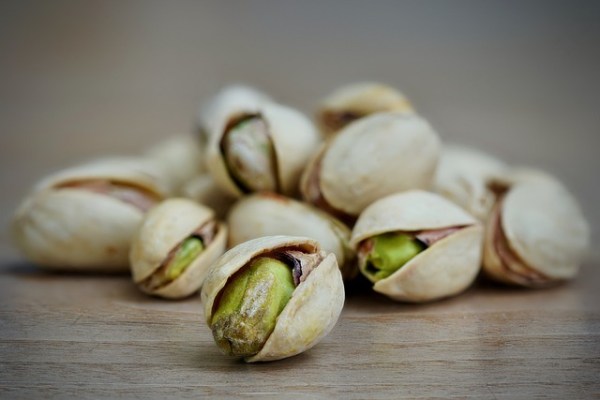
1. What is special about pistachio cultivation?
The pistachio tree (Pistacia vera L.) is a deciduous tree of the anacardiaceae family and whose height can reach 10 meters. It is a dioecious plant, this means that there are male trees and female trees. Its pollination is anemophilous, that is, the transport of pollen from males to females is carried out by the wind.
The main pistachio producers are Iran and the United States, although its cultivation is increasing in countries such as Spain due to its high profitability and the optimal conditions provided by the Mediterranean climate. In general, it could be said that pistachio cultivation can occur in all those areas where vines, olive trees or almond trees are grown.
The pistachio tree takes time to reach its maximum production. From the beginning of the plantation, it is necessary to wait four or five years until it begins to bear fruit, and it is not until the eighth year that it reaches maximum production. Although, it is a tree with a very long productivity that can reach 50 years.
1.1. How much does it produce per hectare?
It has typically been cultivated in dry land, although its production in irrigated land is increasing, since the yields are much higher. To give you an idea, productivity in dry land is around 700 or 1,000 kg/ha, while in irrigated land it can exceed 2,000 kg/ha.
1.2. How much do you pay for a kilo of pistachio?
The average price paid to farmers in Castilla-La Mancha in recent years is around €6.60/kg for traditional productions and €10/kg for organic production, so the gross income could be around €4,620/ha in dry land and €13,200/ha in irrigated land, for conventional exploitation systems.
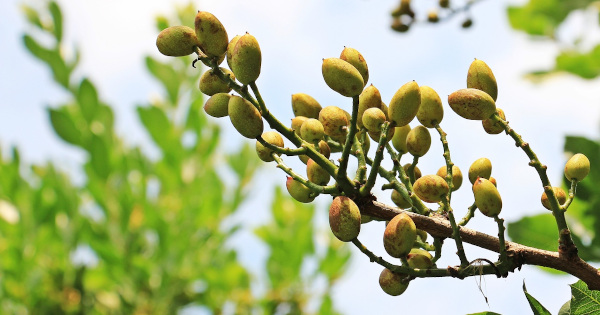
2. What is the appropriate climate for pistachio?
The first thing we have to know is if we can plant pistachios in our area, which will depend on the weather.
The pistachio flowers between the end of March and mid-April depending on the variety, so it is vitally important that there are no frosts in our area once the flower has come out. If so, significant damage to the plant and the harvest would occur.
On the other hand, if in the area where we want to plant there are significant rains during flowering (April and May), this could also negatively affect the pollination of the flowers, since it is an anemophilous plant.
In terms of temperature, the pistachio tree is a very rustic tree, capable of withstanding extreme temperatures, both hot (50ºC) and cold (-30ºC). During the months of June, July and August it needs a lot of heat and a dry environment to avoid diseases. In winter it needs to accumulate cold hours* so that it can flower in spring.
These two factors, the need for cold in winter and low humidity in summer, mean that it is not a suitable crop for coastal areas or places with abundant rainfall in the summer.
2.1. What are the cold hours?
Deciduous fruit trees, such as the pistachio tree, go into rest during the winter with the arrival of the cold, it is as if they «fall asleep». During this period they will accumulate hours of cold, this is all the hours of the day in which the temperature is less than 7ºC. Once they have reached a few hours of cold enough, the tree «wakes up» and begins its flowering.
For this reason it is very important to choose the variety well: if, for example, our plantation is going to be in an area with milder winters, such as Andalusia, we will choose a variety that needs fewer hours of cold and whose flowering, therefore, is early, as this is the case of the Mateur variety. If, on the other hand, our area is characterized by colder and longer winters, for example Castilla y León, we should choose a later variety, such as Kerman.
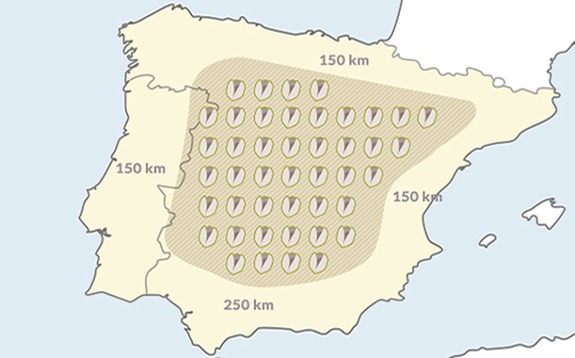
3. The soil in pistachio cultivation
To grow pistachios, the soil is also important. The pistachio tree adapts to most soils: poor, alkaline, acidic, saline, etc. Although, it prefers loamy-sandy or sandy-loam soils, pH between 6 and 8, with good drainage, since it is very sensitive to waterlogging, especially in young trees, due to the risk of the Verticillium fungus, which makes it sick.
4. Previous work. Tillage of the land before planting
Once we know if our area is suitable for pistachio cultivation depending on the soil and the climate, the next step would be to define the previous work that must be carried out on the ground. All of them must be carried out between 2 and 5 months before the establishment of the plantation.
If the soil of the plot is deep (>1m), it would be enough to make a moldboard pass. However, if we have a shallower soil, with a crust near the surface, highly compacted or with little aeration, we should opt for a subsoiler pass about 80 cm deep, in this way these problems would be mitigated.
After these mechanical tasks, we must assess whether it is necessary to carry out a bottom fertilization (in depth). With this, we will be able to get a higher yield in the event that we have soils poor in nutrients or organic matter. This operation can be carried out before the establishment of the plantation or distributed during the first two or three years. A good option for this previous fertilization is to use manure, with an approximate amount of 15-20t/ha for shallow soils, and 30-40t/ha for deeper ones.
5. Plantation layout
At this point we will define the planting framework and the distribution of the trees on the plot.
5.1. What is the plantation framework for the pistachio tree?
The most common planting frames are 6×6 or 7×7 meters. Although, this can vary according to the intensification that we want; If the plantation is going to be rainfed, it would be best to choose a 7×7 frame to reduce competition for water. On the contrary, if the plantation is going to be done more intensively, a 5×5 frame could even be put in place.
5.2. How many males should be planted for each female?
On the other hand, we must bear in mind that the pistachio tree is a dioecious plant, with males and females, so this will be a key factor when it comes to distributing the trees. The function of the males is only to produce pollen, that is, they are not going to produce fruits, but it is the females that produce the pistachios. Therefore, it will be necessary to place a male every 8 or 10 females.
Another important factor for the design of the plantation is that, as we have already mentioned, the pistachio tree is an anemophilous plant (transport of pollen by the wind), so the speed and direction of the wind will be of the utmost importance. If there is a predominant wind direction in our plot, for example, northwest, we could follow the distribution in Figure 2. If, on the contrary, there is no clear direction or we do not know this data, we would choose a distribution like the one in Figure 1.
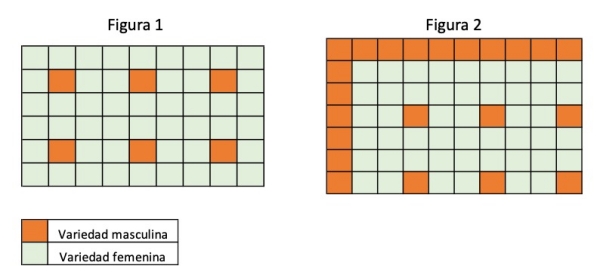
Once the planting frame and distribution have been decided, a marking will be carried out on the plot to define the position of the trees on the ground.
6. Grafting and rootstocks for pistachio
Like most fruit trees, the pistachio tree requires grafting.
6.1. What is a graft?
A graft consists of uniting one part of a plant with another, in such a way that a «weld» is produced between the two that makes them develop together forming one. These two parts are:
- The graft, spike or variety, which is the one that will form the upper part of the tree and, therefore, the one that will bear fruit.
- The pattern, foot or rootstock, which is what forms the root system.
At this point, we have two options, we can buy the plant already grafted (more expensive) or graft it in the field (it takes longer to grow and is more risky).
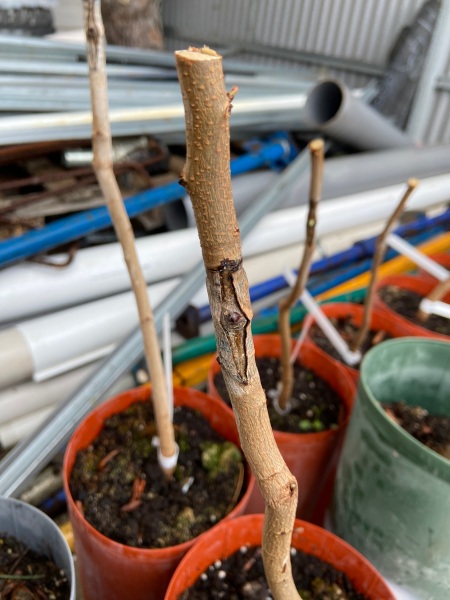
The most recommended thing is that, if we are not experts in grafting, we buy the grafted plant in the nursery, even if it is more expensive. If the grafts are not carried out very precisely, they can become contaminated by fungi, dry out, or fail to take hold, so a saving in the initial investment can end up assuming a higher cost.
In any case, the ideal would be to buy the seedlings with a root ball in a pot, since the root system is more protected.
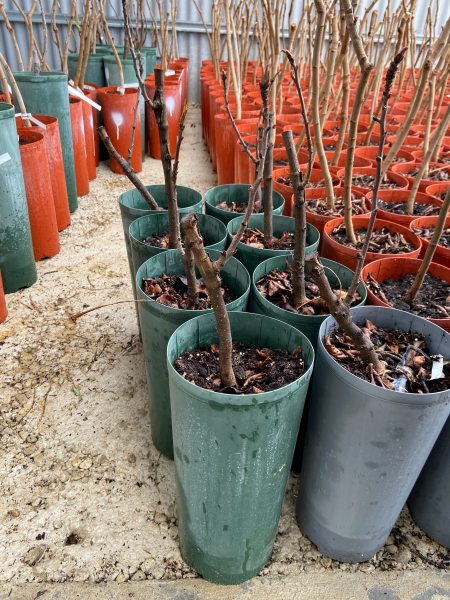
7. Planting and trellising
When we have already acquired the seedlings from the nursery, the next step will be to plant the trees in the points indicated when we made the marking. This step can be carried out around the month of February or March, once the strong winter frosts have passed. To do this, we will open ditches with a height and width that will be twice those of the root ball. We introduce the plants in the ditches and throw soil. In the event that the plants come already grafted, the level of the soil should not exceed the part of the plant where the graft is made. If we are just planting the rootstocks, we will bury them 2cm above the edge of the root ball.
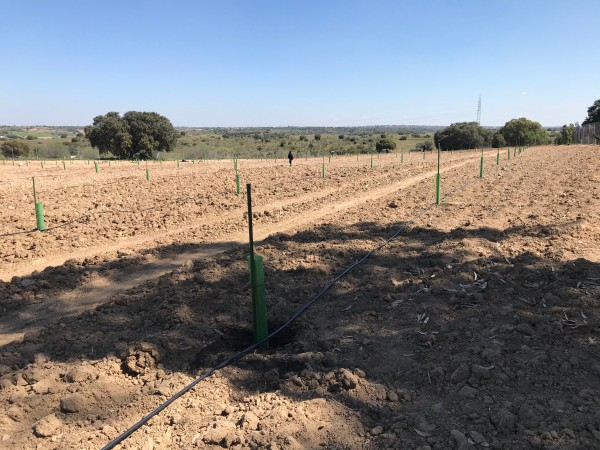
As for the trellising, it is a technique that consists of guiding or directing the plant by tying some of its branches to a tutor, in such a way that it has a support on which to lean and thus be able to grow correctly. For this, we will need stakes of about two meters, which will be placed next to the tree and buried about 40 cm deep. The tie to the plant must be done with anchor-type rubber bands.
Subsequently, protectors about 60 cm high should be placed in order to avoid damage from animals, such as rabbits. We have to ensure proper ventilation, so it would be best to use double-layer micro-perforated polypropylene tubes that allow air circulation.
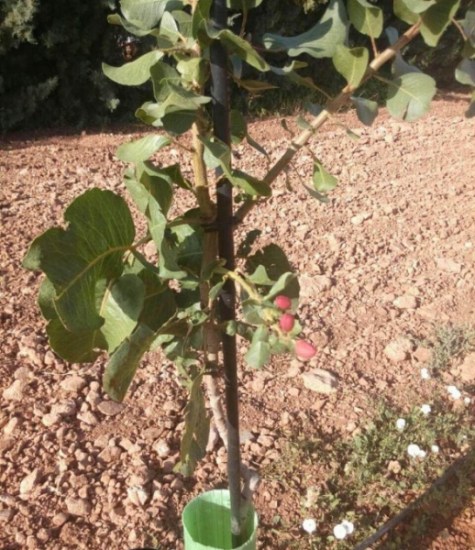
During the following months, it would be convenient to control weeds to prevent them from competing with the pistachios for water and nutrients.
8. Pruning
3 types of pruning will be carried out from the beginning of the plantation (year 0) to the end of its life (year 50):
- Training pruning. It takes place between year 1 and year 6.
- Production pruning. It takes place between year 6 and year 40.
- Rejuvenation pruning. It is carried out between the year 40 and the end of the plantation.
8.1. formation pruning
This type of pruning must be carried out during the first years of the plantation’s life in order to provide the tree with a correct structure that maximizes its production. The first clusters that appear must be eliminated to shorten the period of tree formation.
8.1.1. male trees
The guide branch from the graft should be cut at a height of about 2-2.3 meters from the ground. This task will be done in late winter.
At the beginning of spring, all the buds* that are in the first 170-180cm will be removed and we will only keep those that are in the last 30-60cm from the end.
* What are yolks? We show it to you with this photo:
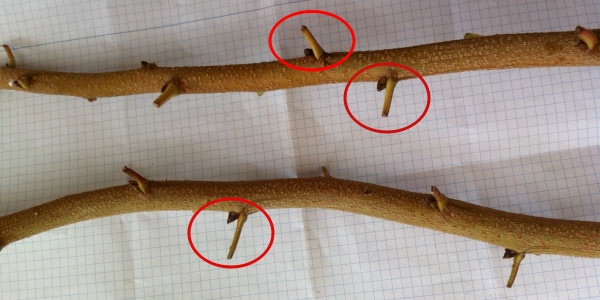
8.1.2. female trees
In the first year of planting, all lateral branches will be removed, leaving only the guide branch.
The following year, when the guide branch exceeds a height of 1.8 m, we must carry out the same task as with the male trees, that is, cut the guide branch, but this time at 180cm from the ground, performing this task also at late winter. In addition, all side branches, if any, will be removed again.
When spring arrives, we should only keep the buds that are between 120 and 170 cm high from the ground, eliminating all the rest.
The third year, we are going to be left with only three primary branches, with a separation between them of 120º. These branches should be cut about 20 to 30 cm from their base. The rest of the branches must be cut flush, to prevent their growth.
In the fourth year, we will be left with 2 branches of each of the 3 branches that we left the previous year. The criterion for the selection of these branches must always be to seek a uniform distribution, that is, try to make the tree grow in all directions. After this operation we will obtain, therefore, 6 secondary branches
In the fifth year, we will carry out the procedure of the previous year: we will be left with 2 branches of the 6 branches that we left in the fourth year, in such a way that we will have 12 tertiary branches. In the sixth year, the same process is repeated, obtaining finally 24 branches evenly distributed in all directions.
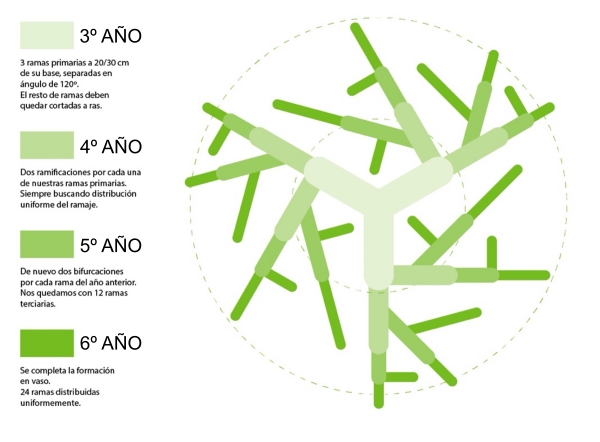
8.2. production pruning
After 6 years from the establishment of the plantation, this type of pruning will be carried out, which consists of:
- The branches that direct their growth towards the interior/exterior and those that are dry or deteriorated will be eliminated.
- Cuts will be made at the ends of the branches at a distance that is defined by the size of the tree: for larger trees, the branches will be cut 10 cm from the end and, for smaller ones, the cuts will be made at 30- 40cm
- Side branches that may interfere with the main structure will be removed.
8.3. rejuvenation pruning
When the plantation is about 40 or 50 years old, it is necessary to carry out an annual thinning, which will consist of removing the poorly positioned branches or those that hinder the passage of light and air.
9. How to pay pistachios
9.1. Nitrogen Needs
Nitrogen is closely related to crop growth and productivity.
At the beginning of the plantation, this subscriber must be applied in the vicinity of the trunk without touching it. As the trees form the crown, its application must also cover the entire surface shaded by it.
| Age (years) | kg/ha | applications/year | Application date |
|---|---|---|---|
| 3-7 | 10-15 | 1 | spring |
| 8 and following | 40-50 | 1 | spring |
| Age (years) | kg/ha (year on*) | kg/ha (year off*) | Application date |
|---|---|---|---|
| 3-7 | 8-15 | 3-5 | april |
| 3-7 | 3-7 | 1-2.5 | June |
| 3-7 | 3-7 | 1-2.5 | August |
| 8 and following | 60-90 | 20-30 | april |
| 8 and following | 60-90 | 20-30 | July |
*Year ON: higher harvests. Year OFF: less harvest
9.2. Phosphorus Needs
Phosphorus fertilization begins when the trees are 5 years old, through a single contribution at the beginning of April, at a depth of 30 cm, every 2 or 3 years. The quantities needed are:
- Between years 5 and 7, 25-30 kg/ha for irrigation and 10 kg/ha for dry land.
- From the eighth year, 50-80 kg/ha in irrigated land and 25kg/ha in dry land.
9.3. Potassium Needs
This type of fertilization is only carried out in adult plantations (from 8 years old) every 2 or 3 years: 3 contributions of potassium of the same amount in May, June and July. The amounts to contribute are shown in the following table:
| farm guy | kg/ha/month (years ON) | kg/ha/month (years OFF) |
|---|---|---|
| Irrigation | 60 | 30 |
| rainfed | 5-10 | 3 |
10. Weed control and soil maintenance
The most recommended technique for weed control in pistachio is tillage. Tillage consists of removing the soil surface, which will allow, in addition to the control of these weeds, an improvement in the properties of the soil, the aeration of the soil and benefits for the root system of the plant.
It would suffice to give between three and six light tillage during the summer, with the aim of mixing the surface layer, and some work during the fall that serves to reduce soil compaction and improve rainwater infiltration.
Despite the fact that this technique has the drawback of increasing erosion, non-tilling is discouraged, since in very dry areas, it would considerably increase compaction. Other soil maintenance techniques, such as the use of cover crops, are also not beneficial, since they could enter into competition with pistachios.
11. Irrigation
Pistachio cultivation is traditionally rainfed. Although, its exploitation in irrigated land is becoming more widespread due to the fact that the yield increases considerably, as we saw at the beginning of the post. In contrast, we can say that irrigation will entail an increased risk of humidity-related diseases, to which the pistachio tree is especially sensitive.
Being a plant that withstands drought very well, a good option is to establish a controlled deficit irrigation (RDC), which consists of providing a lower dose than necessary, which will allow us to save costs without excessively harming the yield.
The most suitable irrigation system is drip irrigation, since, as the pistachio is very sensitive to waterlogging, this system allows us to have better control over the amount added.
For more information on drip irrigation see the following article: Drip irrigation. Advantages and How to Install.
11.1. Irrigation in young plantations
If grafting has not yet been done, 10-15 l/tree should be watered every 6-8 days, without allowing the soil to dry out more than 10 cm deep. Once grafted, during the second year, the irrigation dose increases to 20-30 l/tree every 10-15 days, ensuring that the soil does not dry out at depths greater than 20cm. For nursery grafted plants, we would water every 6-8 days with a quantity of 20-30 l/tree. These amounts would increase as the trees get older.
11.2. Irrigation in adult plantations
The dose and frequency of irrigation will depend on the rainfall, obviously, but also on the type of soil and the stage of development in which the plant is.
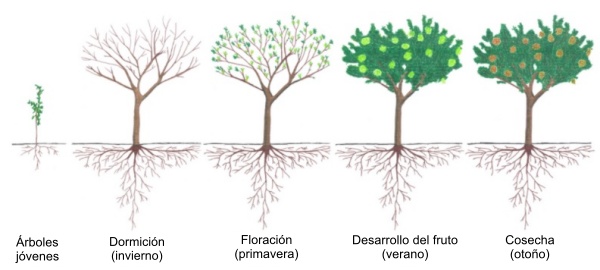
Once we know the phases of plant development, we can distinguish 6 stages in relation to the amount of water it needs:
- Rest state: Corresponds to the dormant period: from the fall of the leaves to the beginning of the budding of the buds. Does not need water.
- Phase I. From flowering to reaching the maximum size of the fruit.
- Phase II. From the time it reaches the maximum size of the fruit until the beginning of the growth of the seed
- Phase III. From the beginning of seed growth to harvest.
- Postharvest: From harvest to leaf fall.
| Phase | Tolerance | % of irrigation needs |
|---|---|---|
| Repose | – | 0 |
| Phase I | Half | fifty |
| Phase II | high | twenty |
| Phase III | Short | 80 |
| postharvest | high | twenty |
How to calculate the irrigation dose
For example, in an area such as Ciudad Real, with an effective rainfall of 277mm per year and a parcel of loam soil, it is estimated that a total of 3600m3/ha per year is needed if we apply irrigation without restrictions. By adopting the RDC technique, this amount is reduced to 1815m3/ha, which could be distributed as follows:
| Month | pe (mm) | R(mm) | CDR (mm) |
|---|---|---|---|
| January | 25 | 0 | 0 |
| february | 24 | 0 | 0 |
| March | twenty | 0 | 0 |
| april | 31 | 0 | 0 |
| May | 30 | 0 | 0 |
| June | twenty | 90 | 18 |
| July | 6 | 135 | 67.5 |
| August | 5 | 115 | 92 |
| September | fifteen | twenty | 4 |
| October | 33 | 0 | 0 |
| November | 29 | 0 | 0 |
| December | 39 | 0 | 0 |
| TOTAL | 277 | 360 | 181.5 |
Effective rainfall (Pe), amount of water required without restrictions (R) and amount of water provided by controlled deficit irrigation (RDC), for a farm in Ciudad Real with loamy textured soil and a planting density of 8×4.
These would be very approximate calculations, since the dose and frequency of irrigation will depend on many factors, for example:
- An area with higher rainfall will obviously have lower water needs
- Sandy soils have a lower water retention capacity than loam or clay soils, therefore, they will need a greater amount of irrigation.
- The higher the planting density, the higher the water requirements
- A younger plantation has lower water needs than an adult one.
Although we opt for the RDC system, the amounts of water required are still high. In many areas of Spain where, despite having water, the quantity may be limited. This condition can lead us to have to make more efficient use of water. For example, if we only have 1000m 3 /ha/year, the irrigation dose would be established based on the growth stages that are most sensitive to drought, in such a way that phase III would be the one that would have preference, followed of the I, the II and the postharvest stage.
12. Collection
The ripening time for pistachios will be around the month of September, depending on the variety. We will know that the fruits are ripe when they turn from green to pink tones.
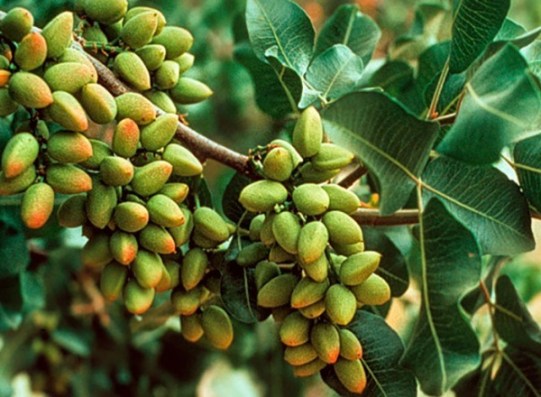
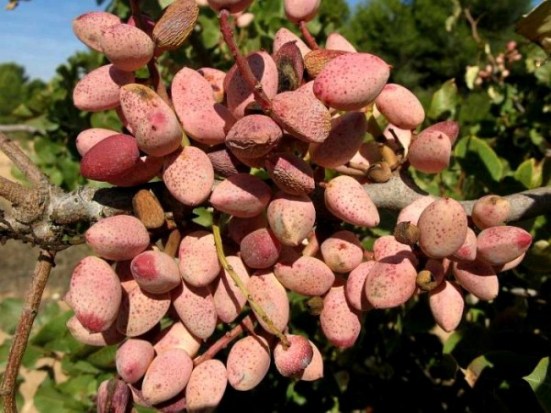
When the fruits have reached maturity, it will be time to harvest. Harvesting can be manual or mechanical, using a vibrator attached to the tractor and a mesh on the ground, an umbrella vibrator, a branch vibrator (vibrating rod), a self-propelled harvester, etc. Comb vibrators used for olive groves are not the most suitable, but they can also be used.
Bibliographic references
- Couceiro, JF, Guerrero, J., Gijón, MC, Moriana, A., Pérez, D., & Rodríguez, M. (2017).The cultivation of the pistachio (2nd ed.). Mundi-Press.
- Ferguson, L., Beede, RH, Freeman, MW, Haviland, DR, Holtz, BA, & Kallsen, CE (2005).Pistachio production manual ( 4th ed.).
- Franquesa, M. (nd).Pistachio cultivation: everything you need to know. Agoptima. https://www.agroptima.com/es/blog/el-cultivo-del-pistachio-everything-you-need-to-know/
- Sáez, I. (nd).Pistachio cultivation. Provincial Council of Jaén. https://www.dipujaen.es/export/sites/default/galerias/galeriaDescargas/diputacion/dipujaen/agricultura-medio-ambiente/Folleto_Cultivo_Pistacho.pdf
- The pruning of the pistachio tree. (2020, March 10). Agrooptimum.https://agroptimum.com/blog/la-pruning-del-arbol-de-pistachio/
- Pistachio grafting from the neophyte’s point of view. (2015, June 25). Plasticine and cellophane.http://plastilinaycelofan.blogspot.com/2015/06/el-injerto-del-pistacho-desde-el-punto.html
- Where can you plant pistachios in Spain? (nd). Casa Sant Roc, Pistachio nurseries.http://www.viverosdepistachocsr.com/manual-pistacho/plantar-pistacho-espana
- García-Muñoz Sánchez-Gil, D. (nd).Grafted plant vs Rootstock. iberopistachio.https://iberopistacho.com/planta-injertada-vs-porinjerto/


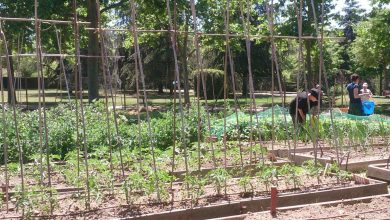
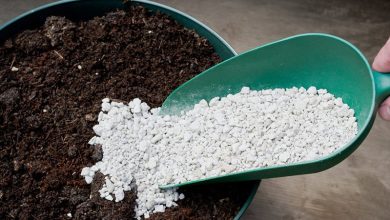
![Photo of How to Prune an Avocado: [Avocado Tree Pruning Guide]](https://www.complete-gardening.com/wp-content/uploads/2021/06/sembrar-aguacates-2-390x220.jpg)